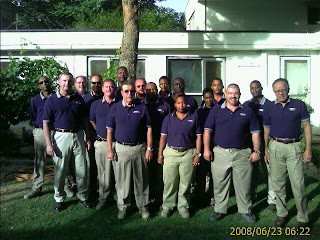
Just finished the US Army Combat Life Saver (CLS) course. The course is not basic first aid, it is "first responder" lifesaving treatment for combat trauma. Over 2,500 soldiers died in Vietnam due to severe hemorrhaging (bleeding) and many could have been saved using the skills taught in this course.
It is mandatory for most of the units who convoy or "go outside the wire"—at least two CLS per squad. Each of our safe houses have at least one designated CLS and I volunteered for my house because I wanted the instruction.
The course objectives are as follows:
-Perform Tactical Combat Casualty Care
-Evaluate a Casualty
-Open and Manage a Casualty's Airway
-Treat Penetrating Chest Trauma and Decompress and Tension Pneumothroax
-Control Bleeding
-Initiate a Saline Lock and Intravenous (IV) Infusion
-Initiate a Field Medical Card
-Request a Medical Evacuation
-Evacuate a Casualty Using a Sked or Improvised Litter
We got hands-on with almost every procedure (we didn’t actually insert a naso pharyngeal airway (NPA) or perform a needle chest decompression). We did, however, initiate an IV infusion. This was the most frightening and entertaining part of the class. Some participants finished the exercise with six or more puncture wounds because their partners were unable to correctly enter the vein with a needle/catheter. I was lucky, my partner had big fat veins that I could hardly miss. There was one big black Army MSGT with arms twice as big as mine who looked away while his partner stuck him, then sweated profusely when it was his turn to perform the procedure.
So rest easy. If you ever suffer from a sucking chest wound, amputated limb, or need a saline infusion, I’m your man!
Out.



